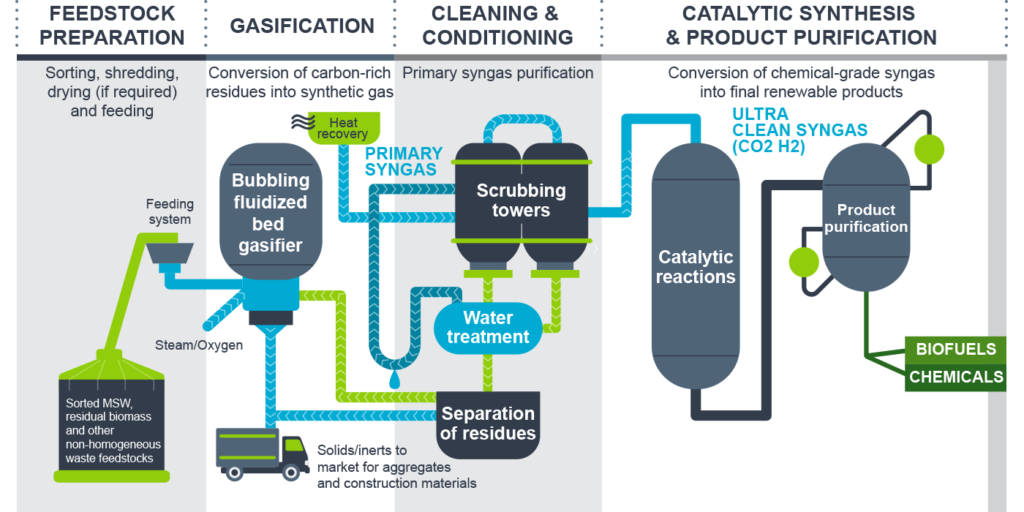Material and Energy Valorisation of Waste in a Circular Economy
Material and Energy Valorisation of Waste in a Circular Economy
Waste-to-energy, commonly via a combustion-based process, is an effective component of a modern waste management strategy, whereby landfill-bound waste streams are converted to heat and power. The technologies supporting these pathways are mature and well-developed and have for many years contributed positively to sustainable waste management processes. In more recent times principles associated with the ‘circular economy’ are emerging, an economy-wide concept moving from a make–use–dispose model to one where reuse, remaking, and recycling underpin a move away from reliance on resource extraction. More demands are being placed on waste-to-energy systems to recover nutrients, valorise ash streams, and further increase efficiencies of heat generation. This has seen innovation in all these areas but has also seen the emergence of alternative technologies not based on combustion. These technologies, often based on principles of gasification, pyrolysis, and biological processes, produce useful intermediates (e.g. gasification for syngas production) that can in turn be used as industrial feedstocks for a range of applications. So they offer added flexibility in terms of products from the energy recovery process, and have the potential to increase the circularity of the waste management and energy recovery system.
This report of IEA Bioenergy Task 36 (Material and Energy valorisation of waste in a Circular Economy), discusses some of the drivers for a more circular approach to waste management in the context of energy recovery, and considers the role of emerging technology pathways – not only thermochemical pathways, but those based on biological and other novel technologies. It also considers some of the non-technical barriers to widespread adoption of such systems.
The full report is available here:
Final Report – Material and Energy Valorisation of Waste in a Circular Economy
2 page summary:
2 Page Summary – Material and Energy Valorisation of Waste in a Circular Economy
Main conclusions:
The emergence of circular economy principles has seen the role of energy-from-waste evolve from a waste management concept to just one part of a broader set of technologies and processes that seek to keep molecules in use for longer. This has seen new principles, pathways, and challenges emerge in the context of waste management and energy recovery.
- New principles. A shift is required in how we use ‘waste to energy’ technologies as part of a broader circular economy. The concept of ‘waste management’ is now shifting to one of materials recycling. Along with this comes the focus on ‘keeping molecules in use for longer’, rather than extracting energy from otherwise landfill-bound waste streams, and the broadening of the products from such pathways to include energy, chemicals, and feedstocks.
- New pathways are required to support these new principles. While technologies to beneficially use combustion residues and extract nutrients from these streams are important, many of the shifts above require new technological approaches. Gasification and pyrolysis approaches are emerging, as are those based on biological processes, and these can offer increased flexibility in terms of products and their use. As CE principles drive their development and uptake, the costs associated with these will decrease, and we can expect them to play an increasing role in broadening what counts as ‘recyclable’ material, and what products we can create from waste streams.
- There are considerable new challenges associated with these shifts, however. Many of these challenges are not technical: public acceptance and regulatory challenges in many cases can prevent both project and technology development. Successful projects require good engagement with communities, and we have seen how high-quality relationships in this regard enable successful project outcomes. There is also an emerging need for policy developers to respond to the new suites of technologies and pathways that are emerging, so that suitable regulatory and permitting processes are in place.

Figure: Process flow diagram of Enerkem waste to biofuel system [Source: https://enerkem.com/]


